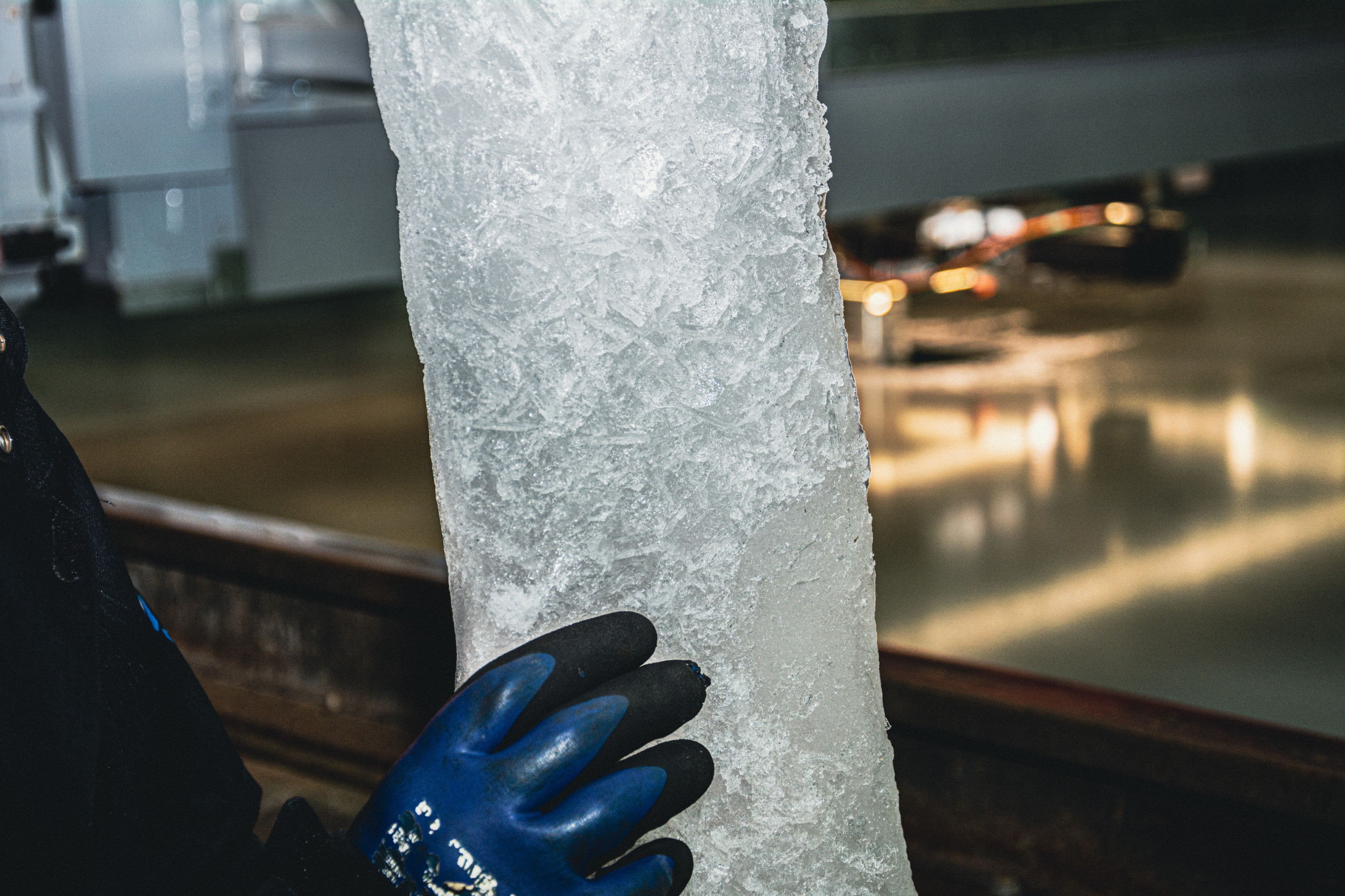A wind turbine at sea that stays upright even when ice starts to form? Nick Ebben, Master’s student Offshore & Dredging Engineering, has been interested in wind turbines for a long time, and he’s not averse to adventure. So he didn’t hesitate for a moment when he got the chance to go to Finland for his thesis research and do research in an ice-cold ice tank on the interaction between wind turbine structures and sea ice.
How did you end up doing this graduation project? And why Finland?
The courses I enjoyed most during my studies were the ones on wind turbine design and the interaction of structures with ice. When I came into contact with my thesis supervisor Hayo Hendrikse, I got the offer to join the SHIVER test campaign at Aalto University in Finland. That was a great opportunity that I didn’t want to miss. The test campaign couldn’t take place in the Netherlands, because it can take years before there’s ice in the IJsselmeer. Aalto University has a large ice tank 40 by 40 metres large. There are only a few of these in the world.
The courses I enjoyed most during my studies were the ones on wind turbine design and the interaction of structures with ice.
Nick Ebben, master student Offshore & Dredging Engineering
Why is this research necessary?
We need to generate more and more green energy using offshore wind turbines. These are now regularly built in seas where ice can form. Currents and wind can cause sea ice to come into contact with platforms, which can consequently move with the ice. At some point, the ice breaks off and the construction moves back to its original position. The force of the breaking ice and the moment when it breaks depend on the dynamic properties of the construction. In very flexible structures, this can cause an interaction in which the breaking ice coincides with the movement of the structure, resulting in considerable vibrations. This, in combination with metal fatigue, can cause the structure to weaken, with potentially disastrous consequences.
What exactly did you study?
I’ve been researching the influence of dynamic structural properties on the ice-induced vibrations of a structure. Think, for example, of mass, stiffness (and therefore the natural frequency) and damping. During this test campaign, a real-time hybrid setup was used for the first time to be able to see and measure the interaction between ice and structure. Real-time hybrid means that the structure is partly physical, but the displacement is determined numerically based on the measured forces, and an actuator moves the pole to the correct position. This made it possible to measure many different dynamic structural properties.
What’s the most important thing that you’ve learned?
That during the testing process things sometimes turn out differently than you had in mind beforehand. Some things don’t work in practice and have to be solved on site. So you must always have a plan B and C ready. I’ve also learned that you shouldn’t only think about the testing itself, but also about processing all the data. That way, you won’t find yourself suddenly confronted with enormous amounts of data and no longer know what belongs to which test.
And what did you enjoy the most?
The moment you start testing and everything turns out to work well after all. The fact that our work generates valuable results, that’s really satisfying. Although, the moment you’re finally able to step out of the -15 degree environment after a few hours and have a drink in the sauna in the evening certainly wasn’t bad either.
What will you be doing in the coming period?
Right now, I’m writing the report of my graduation research. Then I’ll have to defend it, and if the result is good I’ll graduate. I don’t know what I’ll be doing after that yet. Work, continue studying or take a break, anything is possible!
Choice of programme
Nick Ebben, master student Offshore & Dredging Engineering
Which bachelor’s programme did you do and why?
Before this, I did a bachelor’s degree in Mechanical Engineering. When I finished secondary school, I knew I wanted to study something in engineering, but I found it difficult to choose between all the different bachelor programmes so early on. I knew pretty quickly that I wanted to go to Delft after visiting the open days, because I thought Eindhoven and Twente were too small-scale and the student life in Delft seemed more fun. In the end, I chose mechanical engineering because even though mathematics and physics suit me, it’s a broad programme that allows you to go in many directions afterwards.
How has your bachelor’s degree prepared you for where you are now?
After my bachelor’s degree, I went in a different direction, not in mechanical engineering. However, the knowledge that I gained in mathematics and physics is still very helpful. I also learned skills in the bachelor’s degree that I now use a lot: collaborating, writing reports, presenting, doing research, and working with programs such as MATLAB and SolidWorks.
Which master’s programme are you in now?
Offshore & Dredging Engineering with a specialisation in Bottom Founded Structures, Arctic & Wind.
Which parts of your master’s degree were you able to apply in your graduation research?
I was able to combine and apply many of the courses that I took during my master’s in my research. For example, in one subject I learned how ice and structures interact, in another course how the dynamics of structures work, and in yet another course how the foundation of a windmill is designed.









